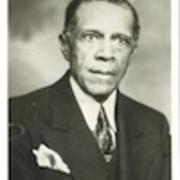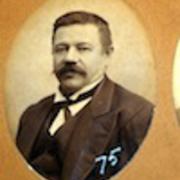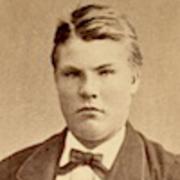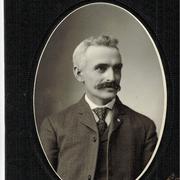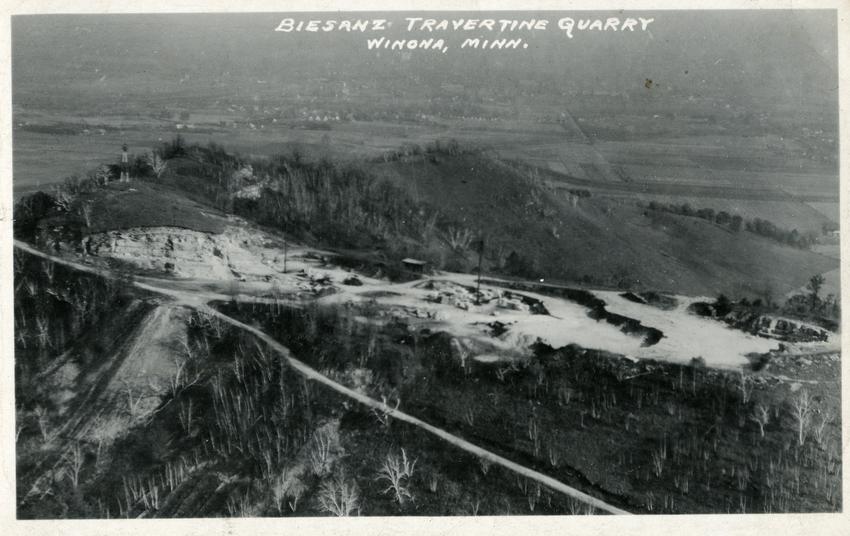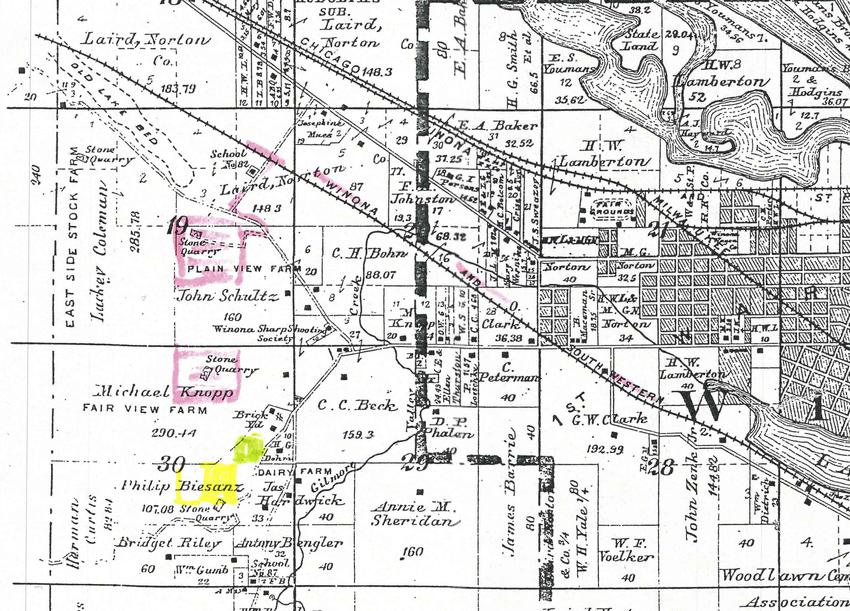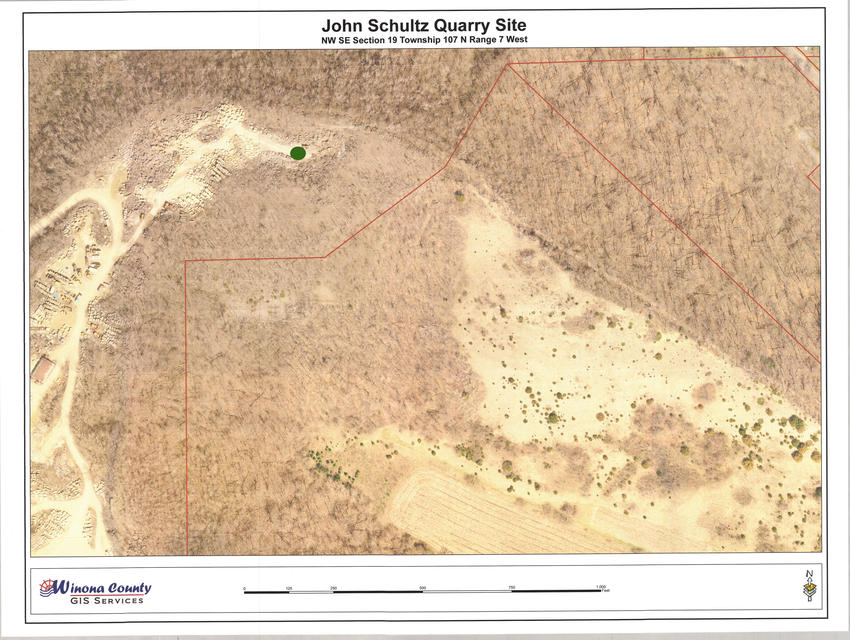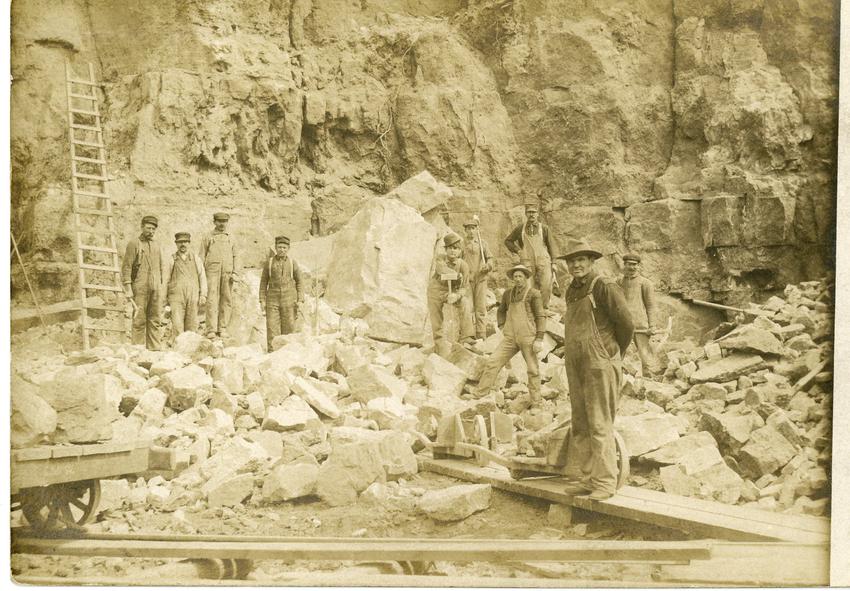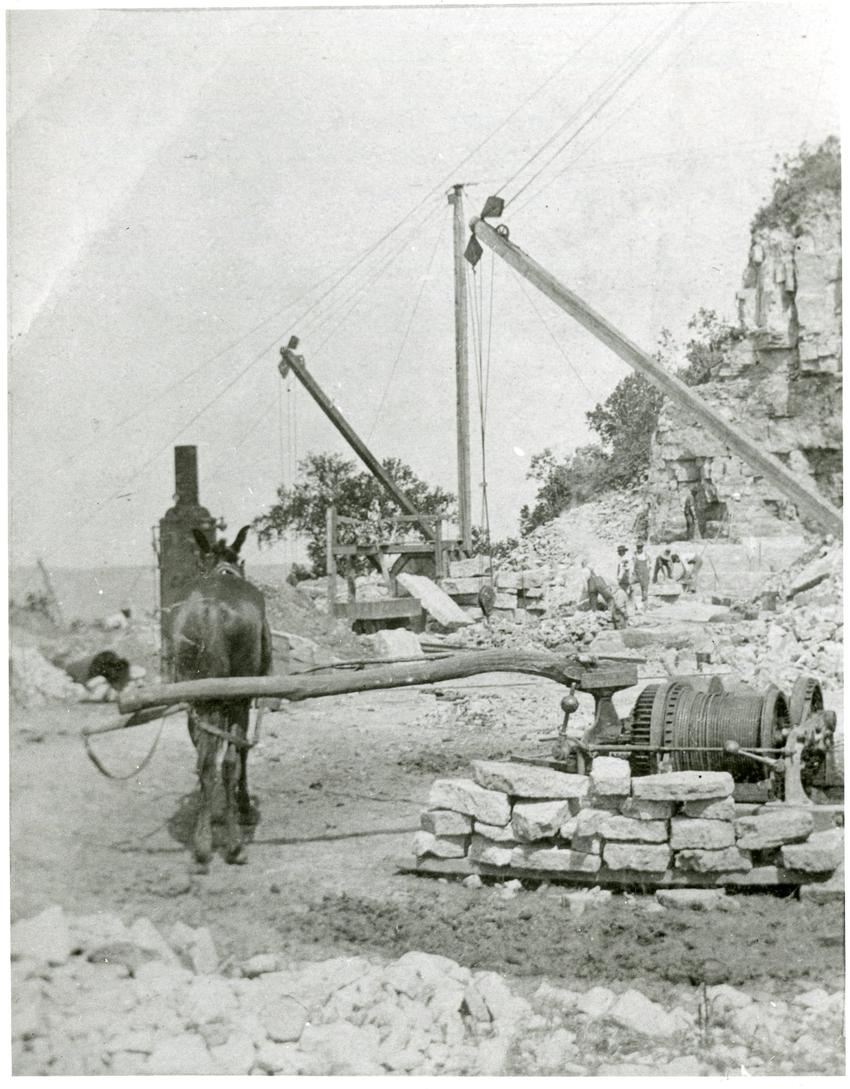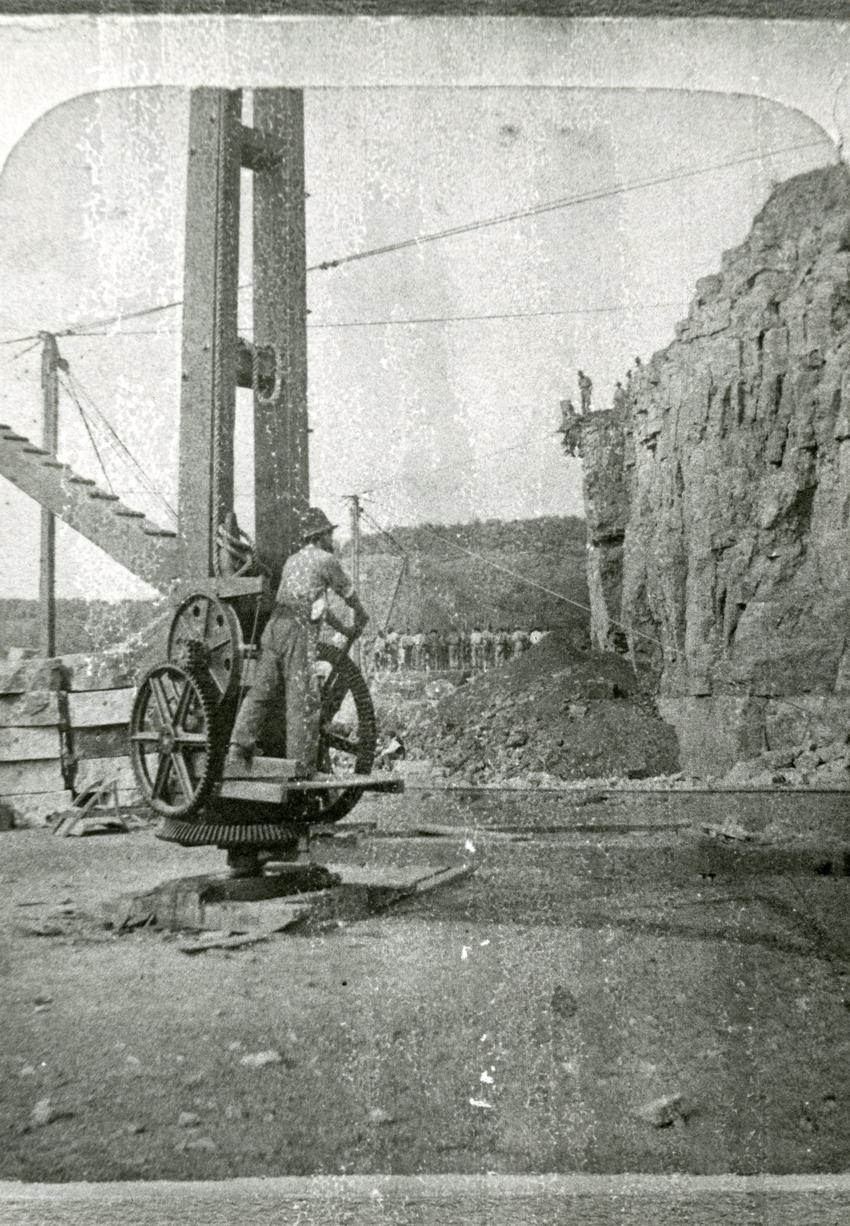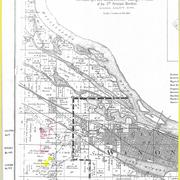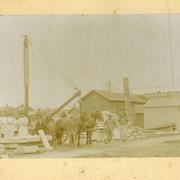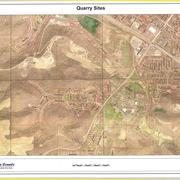
Winona Quarries
The Capitol project research team knew that the stone for the foundation of the building came from Winona limestone quarries, based on Capitol Commission records at the Minnesota Historical Society. Exposed sections of the stone can still be seen in the walls of the statehouse basement. While much of it is painted or covered by interior walls, the bare limestone can be seen in the Capitol Security office and in an exposed area by the vending machines in a corridor near the Rathskeller.
It had always been assumed that this foundation limestone came from quarries owned or operated by the Biesanz company. The company was well established by 1896, when the Capitol foiundation was laid, and the firm remains active in 2014. Neil Thompson’s generally authoritative book, Minnesota’s State Capitol: The Art and Politics of a Public Building, (pages 34-35) , cites Biesanz as the provider of the stone. But when we tried to find the exact location of the quarry to videotape it, the place and the identity of the contractor proved to be more elusive than we expected.
One clue came from Oliver Bowles’ The Structural and Ornamental Stones of Minnesota, Department of the Interior U.S. Geological Survey, Bulletin 663, 1918 (in cooperation with the MN State Geological Survey, W. H. Emmons, Dir.). On page 195 it has a heading, "Haun Quarry" within the Winona County section. It says,
"Three miles northwest of Winona, near Gilmour Valley,a quarry owned by John Schultz and operated by George Haun is reached by a winding and precipitous road which mounts about 450 feet above the river flats. Transportation is by wagon..(A table shows the different types and depths of stone layers.) Joints are in four systems, north, N. 30º W., and N. 60º E. The joints are far apart, 40 feet in places, which, adds to the difficulty of quarrying. Bedding planes are closed seams but split with ease at intervals of 6 inches to 3 feet. The rock is very porous with small cavities, many of which contain white friable sand and are know as "sand pits." Stone from this quarry was employed in the foundation of the new capitol at St. Paul and the Central Methodist Church, Baptist Church and county jail at Winona. The rock is well adapted for dressed stone with brush-hammered surface. Window sills or steps may be obtained 8 inches thick and 10 or 12 feet long. The rock was tested at St. Paul when the capitol was built, and its employment in this structure should recommend it as a satisfactory material."
Another clue came from Stone: An Illustrated Magazine, Volume XX, January 1900, pages 161-162, in an article found by Winona Historical Society archivist Andy Bloedorn and by project researcher, John Sielaff.
"The St Paul Pioneer Press has a sketch of the Steinbauer Stone Company which has a valuable quarry of dolomite limestone four miles from Winona Minn on the Winona & Western Railway. The company was organized in 1889 with $20,000 capital by C.R. Terry Jr. and Albert Steinbauer. The company has practically inexhaustible supplies of white and gray dolomite stone specially suitable for paving and building.The writer says “The company have a fine machinery equipment and are now putting in a $1,500 tramway and employ 35 hands supervised by Mr Steinbauer, a practical quarryman, who has been in the business for years in Winona. He furnished the stone for the State capitol at St Paul, the Winona post office, the Central ME Church, and other work. The company are now filling orders for 600 carloads for the Chicago Milwaukee & St Paul Railway. Mr. Terry has charge of the contracting."
The Biesanz quarry did not fit the locations mentioned in these sources, but neither did the Haun Quarry. The distance from Winona and the proximity to the railroad helped focus on several quarry sites. Bob Bambenek and Nancy Johnson of the Winona County Recorder’s Office examined old plat maps and deeds for the area and narrowed the location to a quarry on the Schultz property leased by Albert Steinbauer, according to the lease found by County Recorder Bambenek. The potential quarries are highlighted in bottom right portions of the full map below and the close-up section below that, labeled 19 and 30, highlighted in pink and yellow. The probable source of the Minnesota Capitol stone is the highlighted quarry just above the label, PLAIN VIEW FARM. (Map courtesy, Winona County Recorder's Office.)
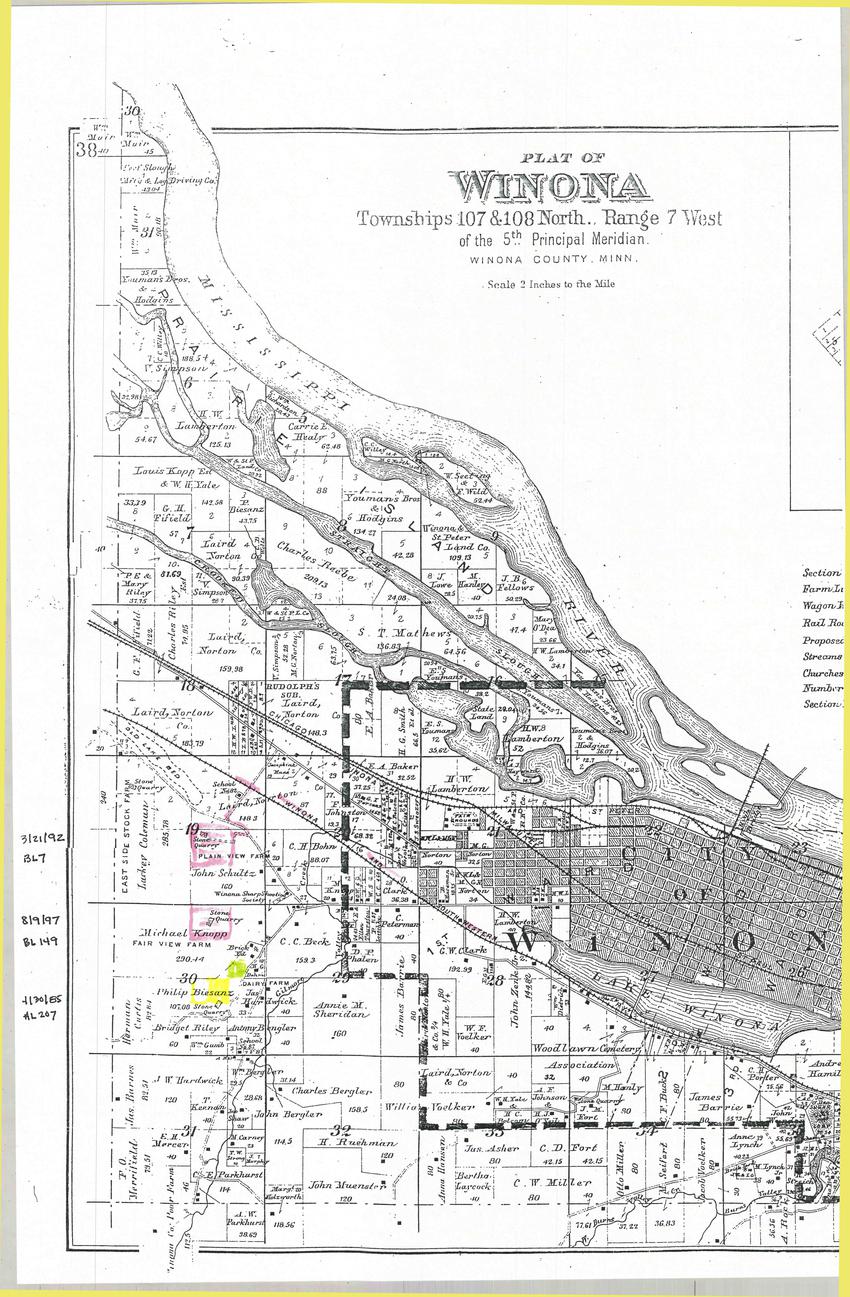
The aerial photos below (courtesy, Winona County Recorder's Office) show the surrounding area and the location where the Capitol foundation stone was almost certainly excavated from the Steinbauer quarry (green dot near center of upper left square). It is now part of the land owned by Biesanz Stone.
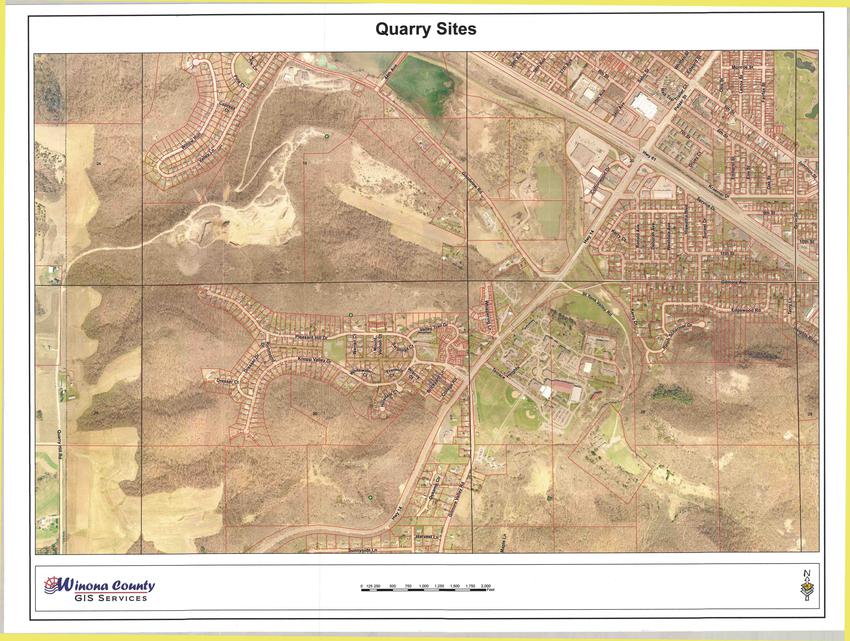
Photo, courtesy Winona Historical Society
Horse-powered hoist at Biesanz quarry on bluff south of Winona, ca 1900
Photo courtesy Winona County Historical Society
Photo courtesy Winona County Historical Society
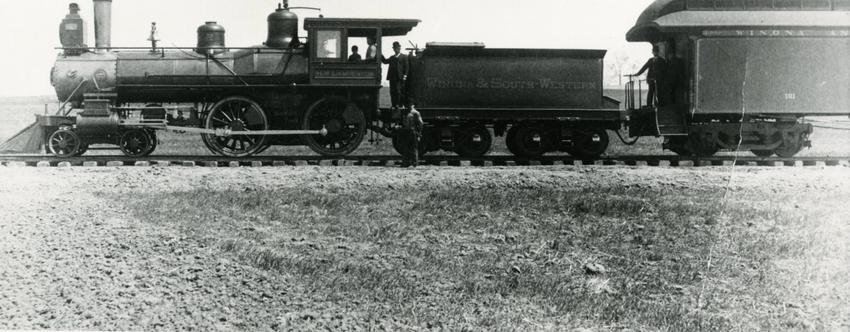
The Winona and Southwestern (later Winona and Western) Railroad hauled the stone from the Steinbauer quarry to Winona, where it was transferred to another railroad line to be carried to the capitol building construction site in St. Paul.
Photo courtesy of Winona County Historical Society
NOTE: Additional information and photographs related to the role of Winona railroads in transporting stone for the Capitol foundation can be found on this website under Transportation.
Click on map, aerial photograph and other pictures below to access images on which one can zoom in and pan to see details.

